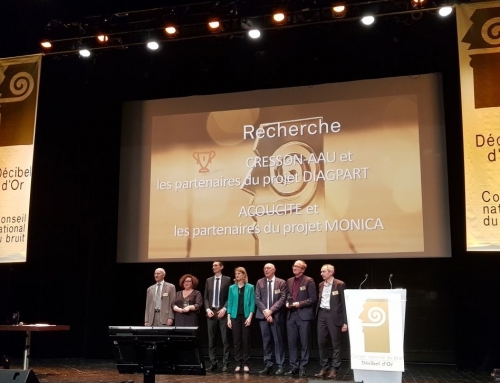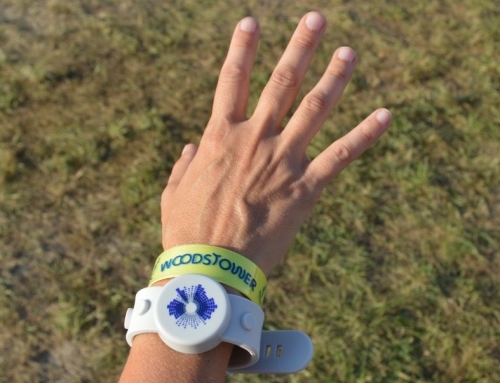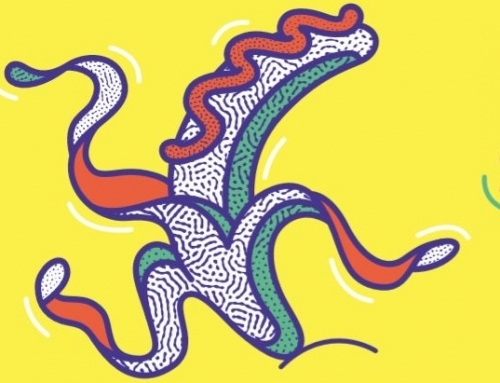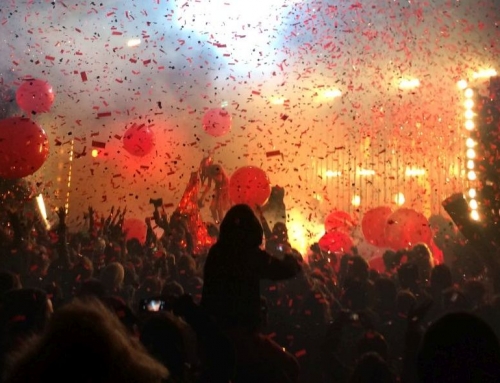MONICA has completed the second demonstration of its acoustic applications at the electronic dance festival Kappa FuturFestival in Torino. Results show progress but also challenges to overcome.
Three acoustic applications are used in MONICA to monitor sound and control its exposure at music events: Sound Level Monitoring, the Adaptive Sound Field Control System and the Quiet Zone System.
Whereas the last two years of tests have proved the feasibility and usefulness of the systems at real events, issues related to network performance and environmental factors remain to be solved.
11 sound level meters help monitor the sound impact
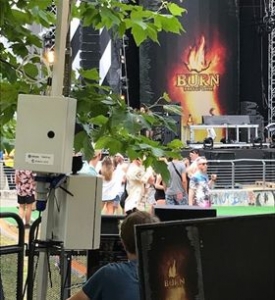 Sound Level Monitoring in MONICA is based on the deployment of Sound Level Meters which transmit different types of sound levels and metrics in real time, using the telecommunication network (WIFI or 3G/4G).
Sound Level Monitoring in MONICA is based on the deployment of Sound Level Meters which transmit different types of sound levels and metrics in real time, using the telecommunication network (WIFI or 3G/4G).
Placed at strategic places at and around an event, the meters transmit data to a gateway which communicates with the MONICA Cloud. From the cloud, the levels and metrics are displayed in the COP in real time.
At this year’s Kappa FuturFestival, 11 Sound Level Meters were installed, some inside Parco Dora where the festival takes place and some in private apartments adjacent to the festival area.
Overall, the transmission of data went smoothly when it came to low rate data such as sound levels and spectra where there were only occasional problems inside the venue. However, when it came to transfer of high rate audio recordings which are needed for contribution analysis and Adaptive Sound Field Control, a lack of a high network bandwidth resulted in data losses inside the venue.
– ‘When it is required to send large amounts of data, such as audio recordings, the telecommunication network is often the bottleneck, especially in case of concerts where there is large amount of people in a relatively limited area‘, explains Claus Blaabjerg R&D Manager at Brüel & Kjær Sound & Vibration Measurement who supplies the sound level meters.
The LTE network outside the venue was not sufficient to support the required 1 Mbit/s for a steady transmission of audio recordings.
Availability of sound data is useful
The organisers were able to watch the sound levels in the COP and estimate the sound impact on the neighbouring environment. Additionally, the sound engineers could access the sound levels through the MONICA app.
Evaluation shows that both sound engineers and authorities appreciated the availability of sound levels in the COP and the app. Additionally, the app helped the sound engineers to adjust sound levels and made it easier for them to do to their job.
Attenuation of sound improved but not quite enough
The other acoustic system in operation at Kappa FuturFestival was the Adaptive Sound Field Control System. Made up of 20 subwoofers its job was to reduce the sound coming from the SEAT stage in an area outside the festival which hosts a church. The subwoofers were installed behind the audience to attenuate sound in the courtyard of the church.

The dark zone attenuated sound coming from the SEAT stage in an area outside the festival area.
Results indicate a reduction of 7dB which is a slight improvement from 2018 where a 6dB reduction was achieved.
– ‘The effect was audible but not impressive, mainly because we faced a strong sound spillover from the surrounding stages’, explains Jonas Brunskog, Associate Professor at Department of Electrical Engineering, Technical University of Denmark.
So far, the target of 10dB reduction, which roughly corresponds to a halving of the loudness for the human perception, has only been achievable at MONICA tests in open terrain without adjacent activities and buildings complicating the sound attenuation. Here, a reduction of up to 20dB has been achieved.
– ‘Due to the complexity of the environment, it has not yet been possible to achieve the 10dB reduction at our events. Therefore, we are currently considering deployment at less environmentally challenging events, enabling us to gradually build up complexity’, concludes Jonas Brunskog.
Quiet Zone System delivers 12dB reduction
To create a space at the festival for those who would like the sound in smaller doses, the Quiet Zone System was established close to the audience area of the BURN stage, involving three subwoofers. The approach here was to adaptively reduce the bass sound from the stage in a 2m2 quiet zone. The effect of this low frequency attenuation was considerable and clearly audible with an estimated 12dB reduction.
– ‘The quiet zone system worked as expected. However, we only focused on the low frequency attenuation so the next step is to cover the whole listening spectrum by coupling the low frequency solution with a physical barrier for the higher frequencies. This barrier is the back wall of a big loudspeaker cabinet with a four-channel subwoofer we have built for this purpose’, explains Daniel Plewe, PhD Student at Department of Electrical Engineering Acoustic Technology, Technical University of Denmark.
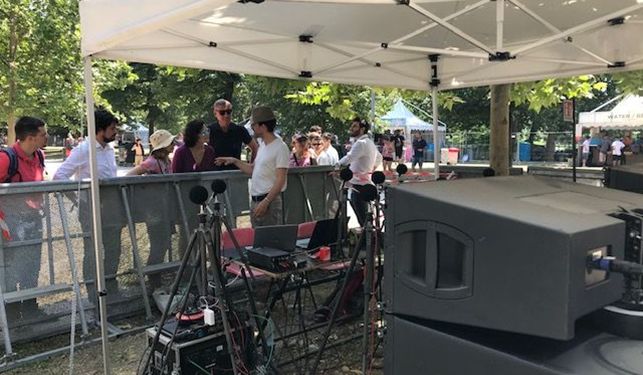
The Quiet Zone System was deployed close to the audience area of the BURN scene.

